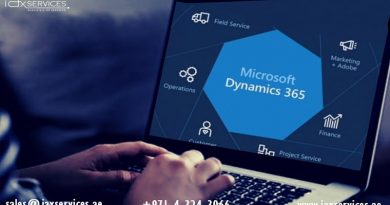The Rise of Technology in the Education Sector
Technological advancements in our modern world have proven to be greater than ever before, tackling issues and being used in almost all aspects of our lives. From simple telephones and illuminating light bulbs and going on long journeys to space in search of new discoveries, these advancements have sky-rocketed in recent years. The application of these technologies best suited in the educational sector is quite evident and flourishing with the introduction of even greater projects on their way of completely revolutionizing this sector to greater extents.
An insight into a modern student
The fact that receiving education in today’s world is the most stressful yet, important aspect of a person’s life, has caused it to become a leading reason for suicide and mental illnesses. In order to help ease this excessive burden from their lives, cheap dissertation writing services and many such assignment help websites are becoming widely popular, mostly due to their easy accessibility to all students. Despite how popular, many individuals argue that such services share an unethical boundary with plagiarism when assignments are bought online.
There are no two ways about the fact that the insanely growing use of technology to benefit contemporaries in education is now taking the face of business hubs; where education is sold to the students and profits from proliferating tuition fees or student loans are generated, leaving the struggling student crushed in a life between managing studies and working part-time jobs to make ends meet.

Therefore, online tuition services are relatively favored; much like the cheap dissertation writing services that are not only readily accessible, but also consist of professional teachers across the globes that provide assistance at flexible timings, like many cheap dissertation writing services and that too, according to the student’s own pace and feasibility of study environment. Ranging from Ivy League, such as Harvard or Oxford, to newly emerging universities, the new trend of online and distance learning is spreading like wildfire that aims to decrease problems such as finance and pressure, associated with conventional classrooms.
Collaboration between educators and developers
The surge of advancements in education would not have been possible without the closely linked relationship between developers; innovating and revolutionizing this sector, and educators; practically implementing and creating awareness regarding these developments to the masses. This iconic collaboration has resulted has remodeled the term ‘education’ along with the methods of teaching in the following ways:
Artificial intelligence learning
Watching robots in previous years was only restricted to our TV screens, in the form of movies or cartoons, leaving us amused and anxious to visually experience them in reality. Now, the question arises what exactly is artificial technology? Simply put, it’s when a machine completes a task based on the existing algorithm. So utterly intelligent, isn’t it?
Such AI technology provides personalized attention to the student, all thanks to the assessments, tests, and course works it promises, based on the student’s progress in class. Such machines can complete tasks very well, even better than humans in most cases, however, their scope and working are very limited.
Machine Learning
This empowers machines, like our computers to learn on their own by the data we provide them. It involves certain software that tracks student progress by recording the data of tests results or questions asked by the machines, like Dream box, which is widely used in the classrooms of developed countries. One of the objectives of this technology is to teach students to learn on their own, without teacher dependency for gaining knowledge and exploring their interests.
It took decades of hard work and becoming hosts of fortuitous circumstances to reach the great heights of developing machine learning technology, which includes the following types of learning:

Supervised learning:
This uses patterns to predict the values of the label on additional unlabeled data, such as the utilization of historical data to predict likely future events.
Unsupervised learning:
The system, in this case, is not fed with the ‘right answer’ or historical data, rather, it is upon the algorithm to figure out what is being shown. For this reason, it is used to segment topics such as recommending items and identifying data outliners.
Reinforcement learning:
An algorithm in this type of learning discovers data through trial and error, using this to identify which actions exactly yield the greater yields. Thus, it is the most popularly used learning used in classrooms, such as to teach students the best way to gain marks on a certain question.
All these advancements have, undoubtedly, changed our perspective of viewing of education to levels that were unknown before. With classrooms shrinking in size and educator involvement expanding, the student’s presence is viewed to be much more significant and, thus, such emerging technologies make us wonder “what more does the future hold in educational advancements?”



Thanks for sharing your feedback.